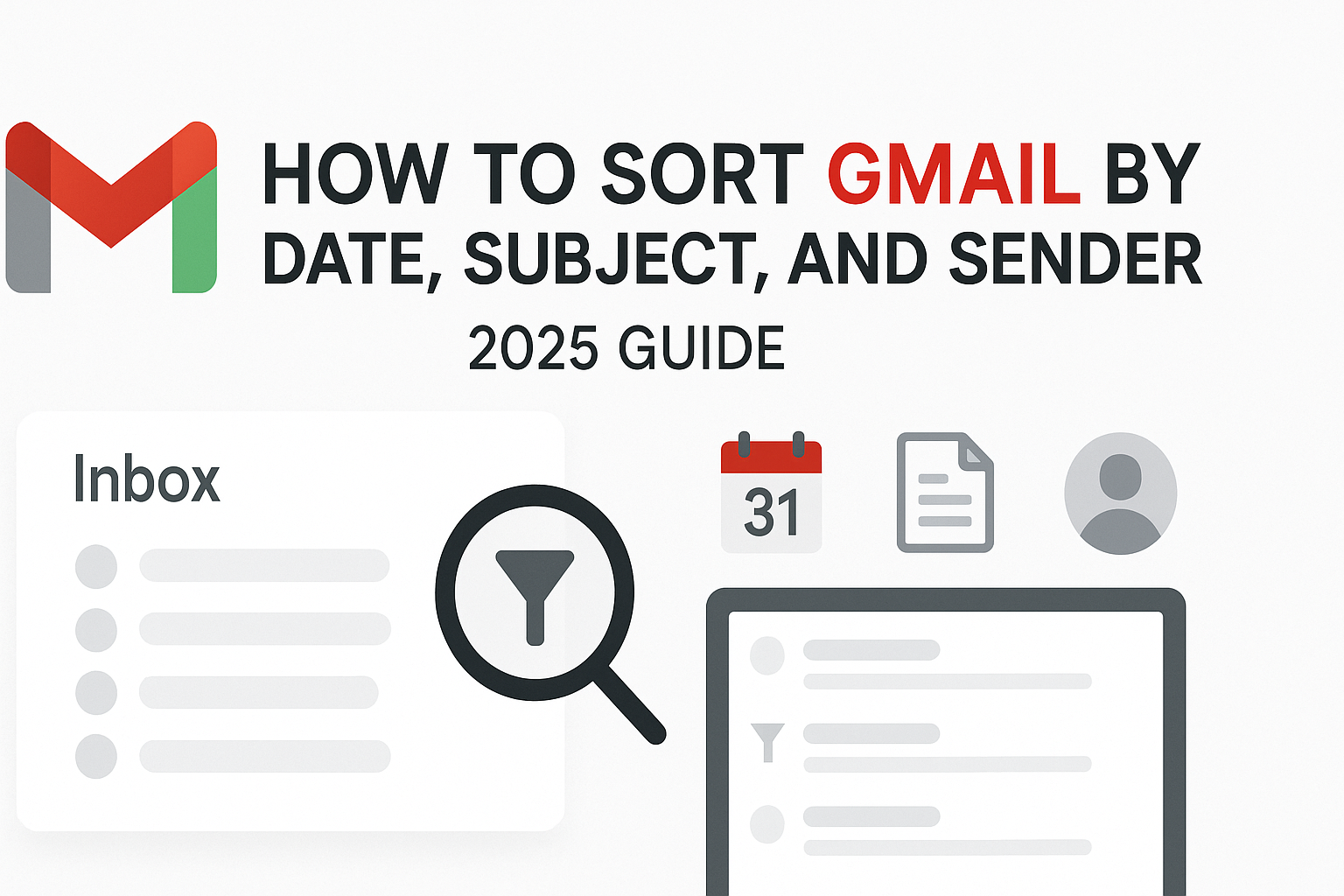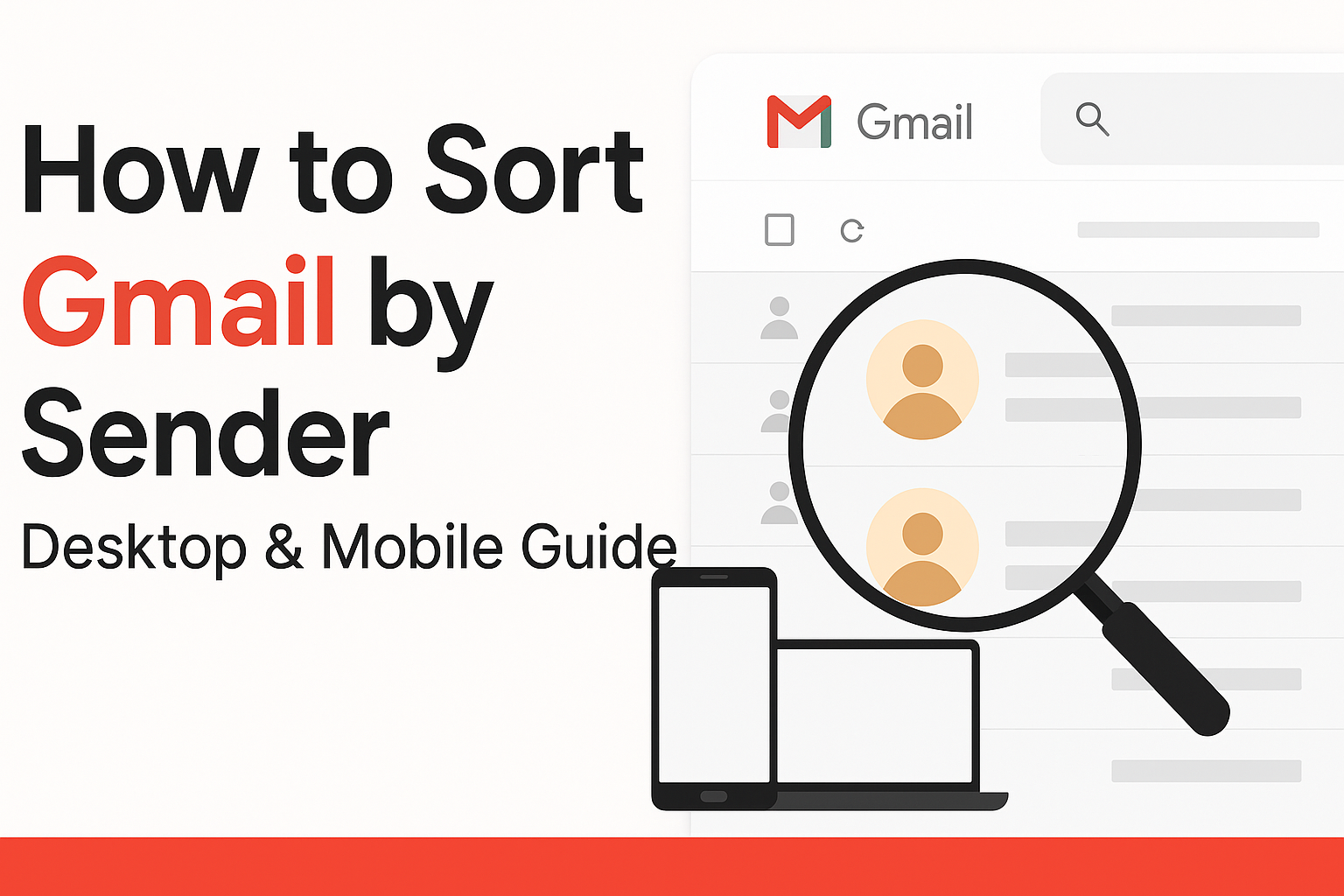In today’s fast-paced digital world, inboxes are overflowing with messages, notifications, and updates. Professionals receive an average of 120 emails daily, making email management a daunting task. The rise of inbox management tools has transformed how we handle this deluge, offering solutions to streamline workflows, reduce clutter, and boost productivity. These tools are a lifeline for professionals, remote workers, digital marketers, business owners, and productivity enthusiasts. In this comprehensive guide, we explore the most used inbox management tools of 2025, diving into their features, user feedback, and why they’re so popular. Whether you’re battling email overload or seeking a clutter-free inbox, this roundup will help you find the perfect tool.
Why Inbox Management Tools Matter in 2025
Email volume continues to surge in both work and personal life. A 2023 Adobe survey found that 60% of workers feel overwhelmed by their email load, with 33% citing email as their biggest workplace distraction. McKinsey reports that knowledge workers spend nearly 28% of their workweek on email-related tasks—about 2.5 hours daily. This email fatigue not only hampers productivity but also contributes to stress and burnout. As highlighted in “Email Fatigue Is Real: What the Numbers Say About Burnout from Inbox Clutter”, this issue is more than just a productivity hurdle; it impacts mental well-being. Inbox management tools have become essential, offering email productivity tools and email overload solutions to help users stay organized and focused in 2025.
Key Features People Look For
When selecting an inbox management tool, users prioritize features that simplify their email experience and enhance productivity. Here are the most sought-after features in 2025:
- Smart Sorting and Filters: Automatically organize emails into folders or labels based on sender, content, or priority.
- Snooze or Remind-Later Functions: Postpone emails to a more convenient time, keeping the inbox focused on immediate tasks.
- Integrations with Project Tools: Connect seamlessly with tools like Slack, Trello, or Asana to streamline workflows.
- AI-Powered Prioritization: Use artificial intelligence to highlight critical emails and suggest actions.
- Unsubscribe and Clean-Up Tools: Easily remove unwanted newsletters or archive old emails for a clutter-free inbox.
- Mobile-Friendly Design: Ensure accessibility on smartphones and tablets for on-the-go email management.
These features save time, reduce stress, and help users focus on what matters most, making them essential for effective email automation and productivity.
Top Inbox Management Tools of 2025
Below is a detailed look at the 10 most popular inbox management tools of 2025, based on user adoption, reviews, and feature sets. Each tool is tailored to specific needs, from freelancers to large teams.
1. Clean Email
- Key Features: Filters for cleaning emails, Screener Feature, Unsubscribe, Auto Clean, Sender Settings, Smart Folders, Reply/Forward/Send.
- Why Users Love It: Clean Email excels at transforming chaotic inboxes into organized systems. A user quoted in the Wall Street Journal said, “I liked Clean Email best. Before, I had 17,677 unread emails. Now, it’s a fraction of that.” Its privacy-first approach, avoiding data sales, also earns high praise.
- Ideal User Profile: Individuals with cluttered inboxes seeking simple, privacy-focused email overload solutions.
- Pricing: Free for up to 1,000 emails; subscription plans for advanced features.
- Source: Clean Email
2. Superhuman
- Key Features: AI-native email with Superhuman AI, Zen inbox, Split Inbox, Follow-up reminders, Snippets, Live email sharing, Read statuses, Autocorrect, Social insights, Calendar integration.
- Why Users Love It: Superhuman’s speed and AI-driven features save time. Jeff Beckham, Head of Product Marketing, said, “Spending less time on email means I can focus on meaningful work that moves the needle for our business.”
- Ideal User Profile: Professionals with high email volumes needing advanced AI email tools for productivity.
- Pricing: Starts at $30/month.
- Source: Superhuman
3. Spark
- Key Features: AI-powered email writing assistant, Priority and Pin functions, Done Marker, Set Aside, Send Later, Reminders, Smart Inbox, Gatekeeper, Mute threads, Team collaboration.
- Why Users Love It: Users value its focus features and intuitive design. Piet Andries, a freelance journalist, noted, “I like the set aside feature, home screen, and how it divides personal and automated emails.”
- Ideal User Profile: Individuals and teams balancing personal and professional email management.
- Pricing: Free plan available; paid plans for advanced features.
- Source: Spark
4. SaneBox
- Key Features: Automatic filtering of unimportant emails, One-click unsubscribe, Follow-up reminders, BlackHole, Daily Digest, Snooze, Works with any email client.
- Why Users Love It: With a 4.9/5 rating from 1,085 reviews, users appreciate its seamless integration and accuracy in filtering emails.
- Ideal User Profile: Users seeking simple time-saving email apps without switching clients.
- Pricing: Starts at $7/month; discounts for students and non-profits.
- Source: SaneBox
5. Mailbird
- Key Features: Centralized email management, Email tracking, App integrations (Slack, Dropbox), AI-powered email authoring, Customizable workspaces, Unsubscribe tools.
- Why Users Love It: Trusted by over 4 million users, Mailbird won the G2 Award for Highest User Adoption in 2025. A user said, “It’s excellent for managing multiple email accounts in one place.”
- Ideal User Profile: Professionals managing multiple accounts needing a unified inbox with productivity tools.
- Pricing: Free with limited features; Premium from $69/year.
- Source: Mailbird
6. Microsoft Outlook (Focused Inbox)
- Key Features: Focused Inbox for prioritizing emails, Multi-account access, Writing assistance, Document integration with OneDrive.
- Why Users Love It: Its integration with the Microsoft ecosystem makes it a go-to for Office users.
- Ideal User Profile: Teams and individuals using Microsoft products needing robust email productivity tools.
- Pricing: Free for personal use; part of Microsoft 365 subscriptions.
- Source: Microsoft Outlook
7. Gmail (Tabs + AI Filters)
- Key Features: Tabs (Primary, Social, Promotions, Updates, Forums), Custom filters, AI features like Smart Reply and Nudges.
- Why Users Love It: Free and widely used, Gmail’s smart inbox features integrate seamlessly with Google Workspace.
- Ideal User Profile: Individuals and small teams using Google Workspace.
- Pricing: Free; paid plans for additional storage and features.
- Source: Gmail
8. Zoho Mail
- Key Features: High security (encryption, S/MIME), Custom domains, Admin console, Email retention, Mobile access, Streams for collaboration.
- Why Users Love It: Carolina Astaiza M, Vice President at Talent & Acquisition, said, “The ‘comment-on/share-emails’ functionality is amazing.”
- Ideal User Profile: Businesses seeking secure, collaborative email automation solutions.
- Pricing: Free plan for up to 5 mailboxes; paid plans for more features.
- Source: Zoho Mail
9. Missive
- Key Features: Team inboxes, Collaborative drafting, Internal threads, Automations, Integrations with 25+ apps, AI editing.
- Why Users Love It: Rated 4.8/5, users like Jeremy Cai from Italic praise its team collaboration features: “It’s perfect for managing shared inboxes.”
- Ideal User Profile: Teams needing shared inbox management and collaboration.
- Pricing: Free trial; paid plans for teams.
- Source: Missive
10. Hey
- Key Features: Privacy-respecting inbox, The Screener, Imbox, Paper Trail, The Feed, HEY Calendar.
- Why Users Love It: Users like Ryan Hoover appreciate its unique approach: “It’s a breath of fresh air compared to traditional email services.”
- Ideal User Profile: Individuals prioritizing privacy and a clutter-free inbox.
- Pricing: Subscription-based (specific pricing not listed).
- Source: Hey
| Tool | Key Features | Ideal User Profile | Pricing |
| Clean Email | Filters, Auto Clean, Smart Folders | Individuals with cluttered inboxes | Free for 1,000 emails; subscription plans |
| Superhuman | AI-native, Split Inbox, Snippets | High-volume email professionals | $30/month |
| Spark | AI writing, Smart Inbox, Gatekeeper | Individuals and teams | Free; paid plans |
| SaneBox | Auto-filtering, BlackHole, Snooze | Users of any email client | $7/month |
| Mailbird | Unified inbox, App integrations | Multi-account professionals | Free; $69/year |
| Outlook | Focused Inbox, Office integration | Microsoft ecosystem users | Free; Microsoft 365 plans |
| Gmail | Tabs, AI filters, Smart Reply | Google Workspace users | Free; paid plans |
| Zoho Mail | Security, Streams, Admin console | Businesses needing collaboration | Free for 5 mailboxes; paid plans |
| Missive | Team inboxes, Automations | Collaborative teams | Free trial; paid plans |
| Hey | Screener, Imbox, Privacy focus | Privacy-conscious individuals | Subscription-based |
What Makes These Tools So Popular?
The success of these tools lies in their ability to address email fatigue through speed, automation, and simplicity. AI integration, as seen in Superhuman and Spark, automates prioritization and drafting, saving users hours. Tools like SaneBox and Clean Email offer time-saving email apps that simplify inbox organization. Cross-device syncing ensures accessibility, while minimal designs reduce cognitive overload. The shift toward email automation and intuitive interfaces reflects users’ desire for tools that work seamlessly, allowing them to focus on high-priority tasks.
Expert Tips on Choosing the Right Tool
Selecting the right inbox management tool depends on your specific needs. Consider these questions:
- Do you get more than 50 emails/day? Tools like Superhuman or SaneBox excel at handling high volumes.
- Do you need integration with CRMs or project tools? Mailbird and Missive offer robust integrations.
- Do you need team collaboration? Missive and Zoho Mail are ideal for shared inboxes.
- Are privacy or data security concerns a top priority? Hey and Clean Email prioritize user privacy.
Testing a few tools can help you find the best fit for your workflow.
Final Thoughts
In 2025, effective inbox management is critical for staying productive and reducing stress. The tools highlighted here—from Clean Email’s cleanup capabilities to Superhuman’s AI-driven efficiency—offer solutions for every user, whether you’re a freelancer, part of a large team, or a startup owner. Try out a few of these best inbox organizers to discover which one transforms your email experience. Share your favorite tool in the comments below and let us know how it’s helped you achieve a clutter-free inbox!




